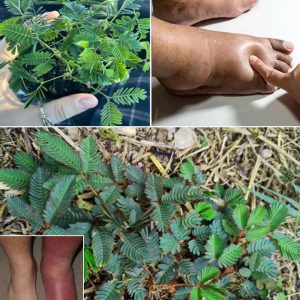
A woman in her late nineties still works in an oncology clinic in Moscow, caring for patients with remarkable energy.
Over the decades, this extraordinary doctor has diagnosed countless cases of cancer—and she shares her simple but powerful secret: avoiding just two everyday products.
A Childhood Marked by Scarcity
Born in 1924 (some sources say 1925) in the Smolensk region, her childhood was defined by hunger. Coming from a humble family, survival meant eating whatever was available—potato peels, wild herbs, anything they could find. The war only deepened these hardships.
As a young nurse helping with evacuations, she noticed something troubling: those who ate mostly white bread, sugar, and canned goods seemed to develop cancer faster than people who stuck to simple, natural foods from the countryside.
Later, as a physician, she began recording not only clinical symptoms but also the eating habits of her patients. A clear pattern emerged: cancer appeared more often among people whose diets were heavy in certain products.

Two categories stood out most of all—refined sugar and processed meats.
Sugar: A Silent Fuel for Malignant Cells
By the mid-20th century, sugar had become widespread—sweets, candies, and sugary products became part of everyday life. Alongside this, she observed a rise in cancer cases among younger patients whose diets were loaded with sugar. Science has since confirmed that cancer cells consume glucose at a much faster rate than healthy cells, and too much sugar also promotes inflammation.
She personally chose to eliminate refined sugar completely from her diet. Over time, her sense of taste changed: the natural sweetness of fruit—berries, apples, even carrots—was more than enough for her.
Processed Meats: Attractive on the Outside, Questionable on the Inside
Products like sausages, cold cuts, and canned meats became symbols of progress in the Soviet era. But the oncologist noticed that frequent consumers of these foods had a higher risk of digestive cancers, such as stomach and colon cancer. She explained that processed meats often contain nitrites, phosphates, colorants, and other additives, which can form carcinogenic substances during digestion.
She called them “convenient poison”—easy to eat, but harmful in the long run. Instead, she preferred simple, wholesome foods: boiled meat, fish, and fresh vegetables.

Her Lifestyle: A Formula for Longevity
A Balanced Daily Routine
Her mornings began with warm water, lemon, and a spoonful of flaxseed oil. Breakfast was oatmeal with berries or cottage cheese. Lunch was soup with a small portion of meat and vegetables, while dinner was always light—just salad or fish. She never ate after 6 p.m., insisting, “The stomach needs to rest.”
Constant Movement
Even approaching 100 years old, she walked about 2.5 kilometers (1.5 miles) every day to get to work. She didn’t need a gym—walking was part of her daily rhythm. For her, movement was “the best medicine.”
Emotional Calm
She lived through war, endured loss, and faced challenges, yet she always remained calm. She believed worrying about what cannot be changed is a waste of energy; what can be changed should be faced with serenity.
Restful Sleep and Routine
She woke up at six, exercised, worked, walked, and went to bed at ten. “The body likes predictability,” she often said. She believed that quality sleep was more powerful than any drug.
Her philosophy is simple: “I want more than just a long life.” Her secret isn’t exotic formulas or miracle cures—it’s about avoiding harmful things like refined sugar and processed foods, and choosing a lifestyle that helps prevent disease.




